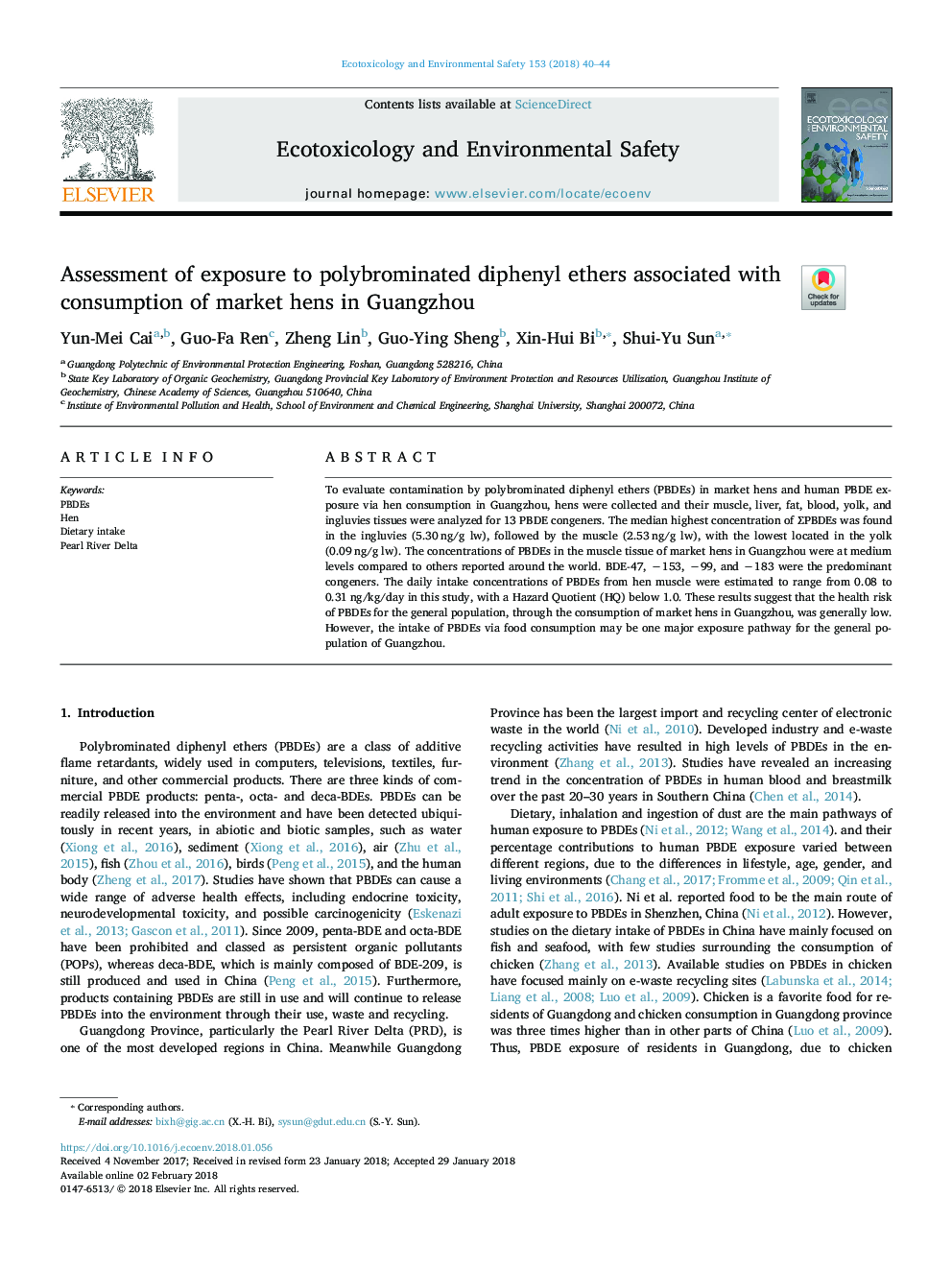| Article ID | Journal | Published Year | Pages | File Type |
|---|---|---|---|---|
| 8854214 | Ecotoxicology and Environmental Safety | 2018 | 5 Pages |
Abstract
To evaluate contamination by polybrominated diphenyl ethers (PBDEs) in market hens and human PBDE exposure via hen consumption in Guangzhou, hens were collected and their muscle, liver, fat, blood, yolk, and ingluvies tissues were analyzed for 13 PBDE congeners. The median highest concentration of âPBDEs was found in the ingluvies (5.30â¯ng/g lw), followed by the muscle (2.53â¯ng/g lw), with the lowest located in the yolk (0.09â¯ng/g lw). The concentrations of PBDEs in the muscle tissue of market hens in Guangzhou were at medium levels compared to others reported around the world. BDE-47, â153, â99, and â183 were the predominant congeners. The daily intake concentrations of PBDEs from hen muscle were estimated to range from 0.08 to 0.31â¯ng/kg/day in this study, with a Hazard Quotient (HQ) below 1.0. These results suggest that the health risk of PBDEs for the general population, through the consumption of market hens in Guangzhou, was generally low. However, the intake of PBDEs via food consumption may be one major exposure pathway for the general population of Guangzhou.
Related Topics
Life Sciences
Environmental Science
Environmental Chemistry
Authors
Yun-Mei Cai, Guo-Fa Ren, Zheng Lin, Guo-Ying Sheng, Xin-Hui Bi, Shui-Yu Sun,
